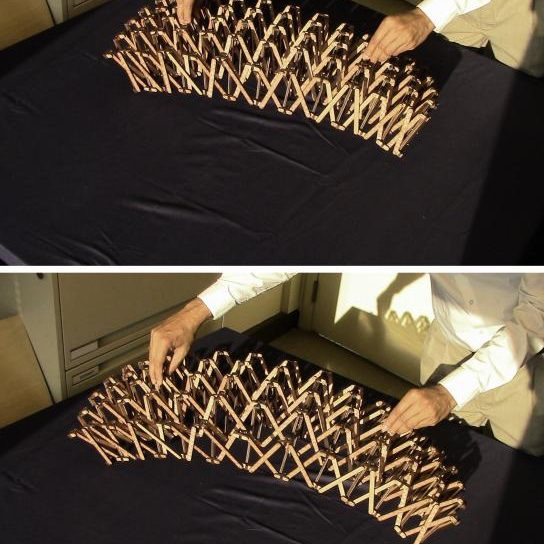Architecture professor develops moving structures

Photo courtesy of Sudarshan Krishnan
Five students worked on this deployable structure in their structural planning course, ARCH 502.
April 23, 2018
Sudarshan Krishnan, professor in architecture, has been developing deployable and moving structures that could broaden an architect’s knowledge of structures.
The deployable structures Krishnan built are models of buildings or roofs that move in different ways to change shape or function. An example of a deployable structure is an umbrella.
“It is going to bring about changes in architectural practice and the way you teach architecture,” Krishnan said.
In spring 2017, Krishnan taught a course about deployable structures, but it was only taught for one semester.
“I gave specific assignments, but I also let students have the liberty to choose what they wanted to do,” Krishnan said.
Get The Daily Illini in your inbox!
Shirlo Selvam, graduate student in architecture, said she first gained interest in these structures from Krishnan’s class.
“This is the part of an upcoming architecture movement and educating students on the same will help them understand the current trends and future problem-solving ideas that they can construct in the professional field,” Selvam said in an email.
She said learning about the deployable structures helped her realize simple concepts that helped her with her studio projects.
Robert Konzelmann, graduate student in construction management and architecture, said even though his concentration is not deployable structures, learning about them still helped him with his current studies.
When building deployable structures, an architect has to be aware of things like mathematics and the engineering behind these structures, Krishnan said.
“For making these developments, now and in the future, there needs to be a parallel study on aspects like materials, sensors, robotic structures, etc. that can aid in deploying structures more efficiently,” Selvam said.
Krishnan said students who are studying architecture and are interested in deployable structures should be open to learning about other fields they are unfamiliar with.
“We have to know more; we have to be willing to learn about fields that are alien to us, like mechanical engineering,” Krishnan said.
He said it might be difficult at first but is worth it when a project comes together. Students should be able to learn about art and design, engineering, math and more in order to understand deployable structures, but you can’t expect students to take all these courses, Krishnan said.
“Architecture tends to bind a number of industries together to bring the best solutions to the humanity,” Selvam said.
If different departments’ faculty could come and teach the fundamentals of their classes, it would be an efficient solution, Krishnan said.
“I think, like I said, we have the resources here to bring together all the faculty. It’s just people need to be open to learning,” he said.






